How the Raiders-Bears Trade for Khalil Mack Changed the NFL: ‘It Was a Shock’

Khalil Mack chatted with a few teammates, as he made his way toward the Chargers’ locker room after an afternoon practice in June.
Perhaps the seven-time Pro Bowl edge rusher was sharing football advice with his inexperienced defensive teammates, or maybe it was a discussion about the latest season of Bel-Air, the show Mack was watching when he got the call about being traded for a second time in his career, going from the Bears to the Chargers in 2022.
Whatever Mack was chatting about before being stopped on that day in Costa Mesa, Calif., it was almost certainly not about his first trade, which generated a lot more buzz, and might have altered the NFL’s views on trades involving star players and the value of first-round picks.

At the time, teams seldomly relinquished their first-round picks. But that changed Sept. 1, 2018, cutdown day in the NFL, after the Raiders traded Mack to the Bears for a handful of draft picks, including two first-round selections. That had been the first NFL trade in nine years involving multiple first-round picks going to one team for a veteran player.
Before Mack, the Bears sent two first-round picks to the Broncos for quarterback Jay Cutler in 2009. Mack had also been the first veteran defensive player to be traded for multiple first-round picks since 1988, when the Colts acquired linebacker Fredd Young from the Seahawks.
Sports Illustrated spoke to Mack, head coaches and general managers to discuss the impact of the memorable trade five years ago. Some agreed that the Raiders and Bears opened the floodgates for the many megatrades that have occurred in the past five years, while others called it a coincidence and trades should be viewed more as a case-by-case study.
But there’s strong support for the megatrade theory since the first Mack trade, with six veteran players having been traded for multiple first-round picks, including two defensive players (Jalen Ramsey, Jamal Adams) and an offensive tackle (Laremy Tunsil). Quarterbacks Matthew Stafford, Russell Wilson and Deshaun Watson netting multiple first-round picks isn’t surprising, but for a very long time, quarterbacks of that caliber were rarely available. The first Mack trade might have caused the ripple.
“That’s the nature of the business,” says Mack, after being reminded of all the notable trades that have occurred since he left the Raiders. “If teams don’t want to pay, somebody is going to find somewhere else to play, you know what I’m saying?”
Indeed, many star players know exactly what Mack is saying. Amari Cooper, Minkah Fitzpatrick, Frank Clark, Odell Beckham Jr., Stefon Diggs, DeForest Buckner, Orlando Brown Jr., Marquise Brown, Davante Adams, A.J. Brown, Tyreek Hill and Bradley Chubb are all players who have been traded for at least one first-round pick since Mack left California—and later returned after the Bears traded him to the Chargers to reunite with coach Brandon Staley.
A massive trade worth the risk
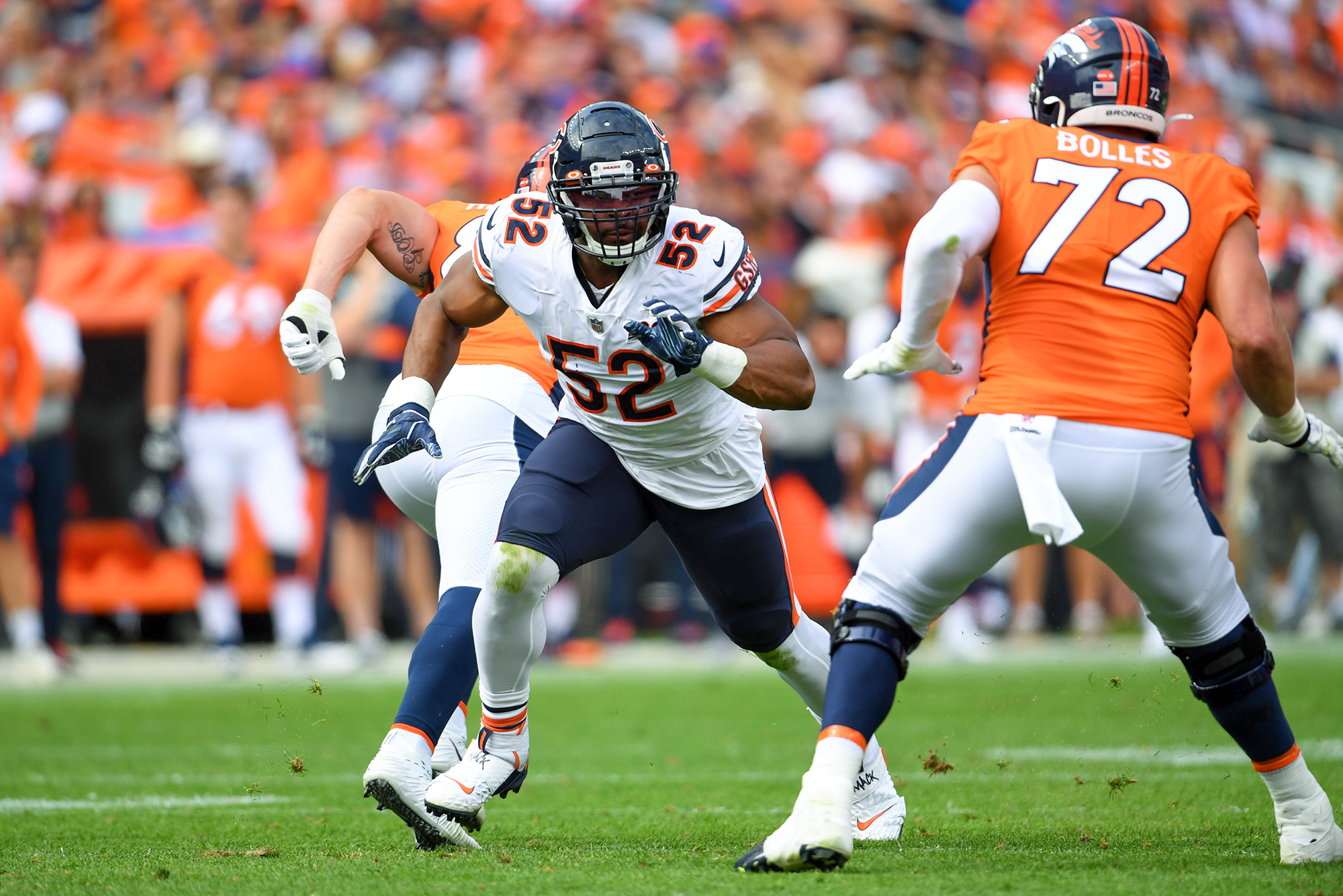
“It was a massive trade,” says Staley, who was Mack’s position coach in Chicago at the time of the trade. “It was a shock to most of us. We didn’t know that this was happening. They kept it quiet. It was very surprising. And I’ll never forget when I got the phone call.”
Mack’s phone call came while he was in New York, and he headed straight to Chicago with only a week to prepare for the 2018 regular-season opener against the Packers. He didn’t participate in the Raiders’ training camp and offseason program. But Mack never imagined he wouldn’t return to his California home for the rest of the year.
“It was just a surreal experience that I’ll never forget,” Mack says.
Staley was asked what he’ll remember the most from his first week of coaching Mack in Chicago. In his nine-minute-long response, Staley detailed the magnitude and rarity of the trade, and why Mack was worth the four draft picks, including a third-rounder and sixth-rounder, plus a massive six-year, $141 million contract extension agreed to hours after the trade, which made Mack the highest-paid defender in the league at the time.
“We just trade for this guy and sign him to this huge contract, so everyone was really careful trying to see if he was O.K., like, what type of shape he’s in,” Staley says, “and I remember everyone just trying to be really cautious, and from the minute he got there, he kind of had this look in his eye that I’m ready. I would kind of have to talk to him about reps and just how we’re going to try to build you up the right way, and our head coach [Matt Nagy] at the time and our general manager [Ryan Pace] were really just doing their jobs in terms of making sure that he was going to be ramped up and ready to play.
“I remember him saying, kind of the way he does, ‘Coach, you do know my play percentage time as a player?’ He plays like 90% of the plays for his whole career. So, he’s like, ‘I’m going to be ready.’ In that first game, he was ready. … We lost a heartbreaker [24–23 to the Packers], but I think our team knew, ‘Hey, with this guy, there’s no telling where we’re going to go.’
“It was just one of those years that changed my life, for sure. It changed a lot of lives, being able to team up with him every day.”
Staley’s Bears defense allowed a league-low 17.7 points per game, and Chicago won the NFC North in 2018. Two years later, Staley became the defensive coordinator of the Rams before taking the Chargers’ coaching job the year after.
As for players in the league, Mack’s trade might have created more of a balance in power, with front office executives and owners often having plenty of leverage over players when it came to contract negotiations.
“I just wanted to be somewhere I was wanted and respected,” Mack says of how it played out with him and the Raiders. “I just wanted to play ball. … Football is a game, but at the end of the day, it’s our livelihood. You gotta respect each man that goes and plays the game as hard as they can, and to be reciprocated on the other end of being paid to play the game at the level that they play at.”
The trade boom of 2018 to ’22
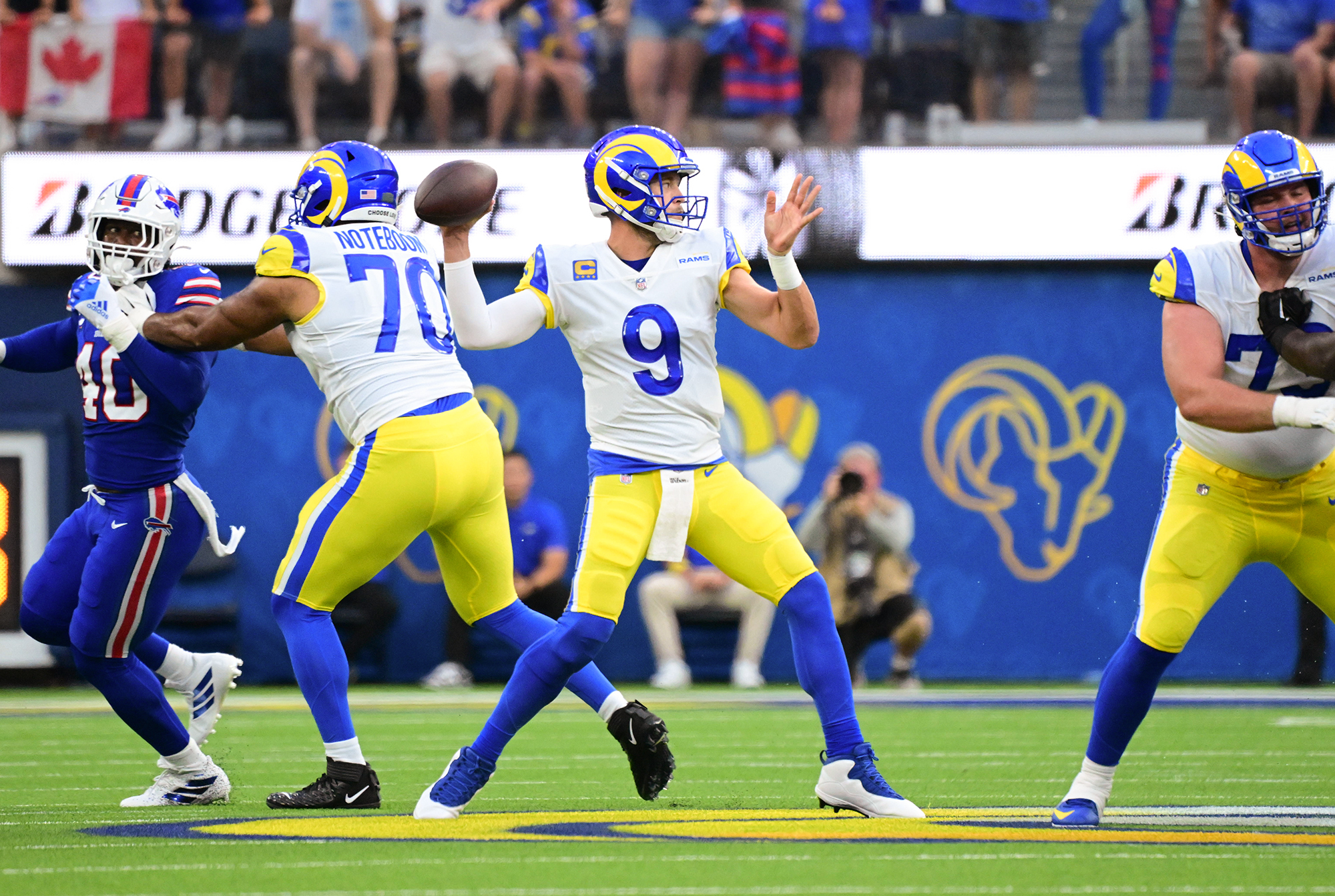
For a long time, first-round picks were viewed as golden tickets that shouldn’t be forfeited in hopes of landing the next NFL star through the draft. But after the Mack trade, it was the Raiders who received the bulk of the public criticism for letting go of an elite edge rusher in the midst of his prime, despite being the team with the two extra first-round picks. (The Raiders, however, won the award for Best Transaction during the annual Alpha Awards at the MIT Sloan Sports Analytics Conference.)
Suddenly, teams realized that first-round picks could provide established NFL stars via trades, a faster, and perhaps safer, alternative to building a championship roster using picks in the draft, which can be somewhat of a crapshoot.
“There are a lot of general managers who are eager,” Raiders coach Josh McDaniels says, who was the coach of the Broncos when they traded Cutler in 2009. “There are a lot of general managers, who, maybe, are willing to go ahead and part with some capital to go ahead and bring a really premier player, whatever the position it might be to their organization, and so, I think, to me, more than anything else, I think there’s a little bit more of a willingness to explore it and then go ahead and follow through with it. I’m sure that a long time ago there were conversations, but there was also probably a little hesitancy to do something like that.”
In 2014, the league didn’t have a trade involving at least one first-round pick going to one team in exchange for a veteran player. One occurred in each of the next three years—Jimmy Graham (New Orleans to Seattle in ’15), Sam Bradford (Philadelphia to Minnesota in ’16) and Brandin Cooks (New Orleans to New England in ’17).
Cooks was traded again for a first-round pick, going from the Patriots to the Rams during the 2018 offseason before the post-Mack trade boom, which continued with the Raiders trading Cooper to the Cowboys in October of that season.
- In 2019, five players were traded for at least one first-round pick: Fitzpatrick (Dolphins to Steelers), Clark (Seahawks to Chiefs), Beckham (Giants to Browns) Ramsey (Jaguars to Rams) and Tunsil (Dolphins to Texans).
- In 2020, three players were traded for at least one first-round pick: Diggs (Vikings to Bills), Buckner (49ers to Colts) and Adams (Jets to Seahawks).
- In 2021, two players were traded for at least one first-round pick: Stafford (Lions to Rams) and Orlando Brown Jr. (Ravens to Chiefs). As a side note: Carson Wentz, Von Miller, Sam Darnold and Julio Jones were also traded in ’21, which involved at least one second-round selection being relinquished for their services.
- In 2022, seven players were traded for at least one first-round pick: Marquise Brown (Ravens to Cardinals), A.J. Brown (Titans to Eagles), Chubb (Broncos to Dolphins), Davante Adams (Packers to Raiders), Hill (Chiefs to Dolphins), Wilson (Seahawks to Broncos) and Watson (Texans to Browns).
“I think that it seems to be commonplace and an event in the offseason where you’re hearing about something like this [trades],” McDaniels says. “We happened to do it last year [with Adams], and there are others. … I think for us, we’re going to try to do whatever we can to make our football team better. That’s what we would try to do. When Te’s [Davante] name came up, and that became an opportunity, it’s like we consider it, you go through everything. How does it affect your team? And if you feel like it improves you and you’re willing to do what the compensation requires to do, then you go ahead and do it.”
The uptick in trades in 2022 could be attributed to the Rams’ winning the Super Bowl, which proved that an aggressive approach on the trade market could deliver a Lombardi Trophy. GM Les Snead orchestrated trades for Stafford, Cooks, Miller and Ramsey, and traded up in the ’16 draft to select Jared Goff No. 1, leading to the Rams’ not having a first-round pick the past seven years.
“The answer would have to be yes,” Snead says about the first Mack deal causing the trade tsunami of the past five years. “I think any time something is done in the NFL ecosystem, there’s an element of disruption there; there’s an element that it’s going to lead to some type of change. It’s a part of some precedent that you’re going to work off.
“It has to play some type of role, whether it’s 10%, 20%, but I bet you the greater percentage is usually teams operate in a vacuum, in a silo, and they’re really focused on what they’re doing and what they think helps them.”
Predicting the next five years
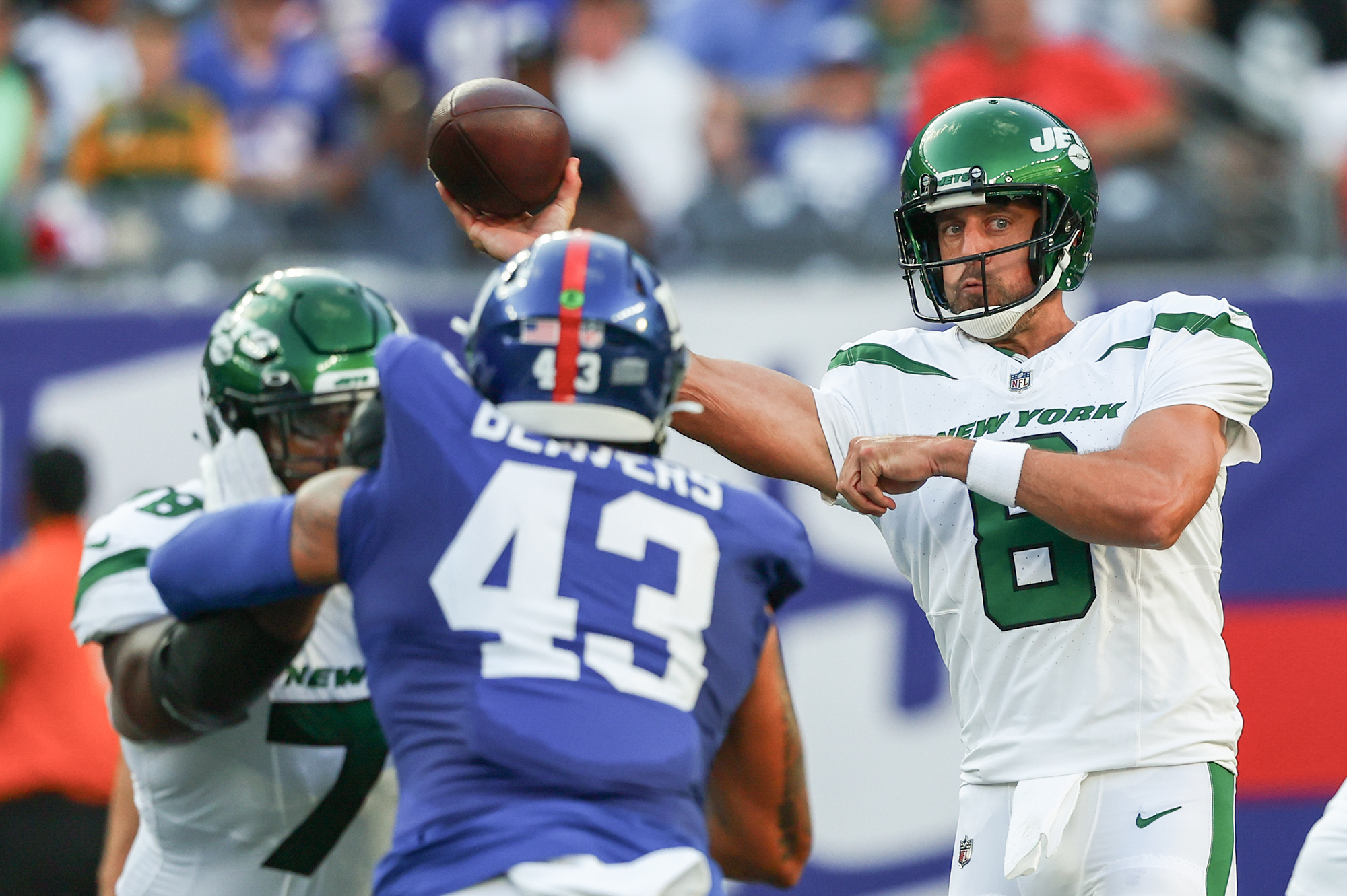
There seems to be a shift with the way teams operated this past offseason. Technically, there have been no trades in 2023 involving a veteran player heading to a new team in exchange for a first-round pick.
Wide receiver DJ Moore went to the Bears, but that was more about the Panthers wanting the No. 1 pick in the 2023 draft to ultimately select quarterback Bryce Young. Also, the Bears still retained a first-round pick this year, moving down to take the Panthers’ pick, which eventually became the No. 10 selection after another trade with the Eagles.
The Broncos traded their first-round pick to the Saints for the right to hire Sean Payton as the head coach. And the Jets’ trade with the Packers for Aaron Rodgers could later involve a 2024 first-round pick if Rodgers plays 65% of the offensive snaps this season. The two teams swapped first-round selections in April’s draft.
If this were 2019 or ’20, and the rest of the circumstances were the same, such as Rodgers’s age and contract, the Packers might have had no trouble getting an outright first-round pick from the Jets. Many years will probably go by before we see another veteran safety be traded for multiple first-round picks—perhaps a trade the Seahawks regret doing with the Jets for Adams. But it was a different period then, and the league tends to follow trends and results.
With the Seahawks not getting much from Adams the past few seasons due to injuries, along with Watson’s and Wilson’s forgetful first seasons with the Browns and Broncos, perhaps more teams have shifted back to keeping their first-round picks.
The Watson trade was just the second time in NFL history in which one team traded three first-round picks for a veteran player. The other one was the infamous trade of 1989 that sent running back Herschel Walker from Dallas to Minnesota. As for another memorable trade involving a veteran running back, Ricky Williams was traded by the Saints to the Dolphins in 2002 in exchange for two first-round picks.
Perhaps no running back in today’s age would command one first-round pick in a trade. For example, the highest draft pick the Panthers received for Christian McCaffrey, arguably the best running back in the league, was a second-rounder from the 49ers last year. But his years in the league and lucrative contract likely were factors in why Carolina didn’t get at least one first-round pick. This trade is also another example of a team being aggressive on the trade market to increase its odds at winning the Super Bowl.
But teams might have asked themselves lately whether the consequences are worth the reward after the Rams crashed to a 5–12 season in 2022 and parted with a handful of veteran players to repair their salary cap a year after winning the Super Bowl.
“I think those decisions are always case by case,” says Cardinals GM Monti Ossenfort, after being asked whether the first Mack trade kick-started the league’s boom in trades the past five years. “Teams gotta decide where they are in their running the team process, where their teams are competitively and the decisions they gotta make. I think those will always be unique. Did those trades affect other people? You know, I don’t know. We study all the moves that happen around the league, and I think in the end, I think teams are going to have to make those decisions case by case. I think some of those trades have worked out positively. Some of them, maybe, not so great. I think it’s always going to depend on the player and where the team is at that given time to decide if that’s the right thing to do for each respective team.
“You’re also giving up a few years of team control, cheaper rookie contracts, but I think that’s the trade-off, so I don’t know. I don’t think so. I don’t think it’s going to be wholesale, but I do always think there’s going to be a player that someone wants to go all in on, and a team deems that person to be the difference-maker. I think there’s always going to be that to a degree.”
Cardinals coach Jonathan Gannon said the Mack trade likely caused the trend of blockbuster trades in the NFL, but he doesn’t necessarily think teams focus on the trade details and the results of the move. Sometimes it can work poorly or positively for both teams.
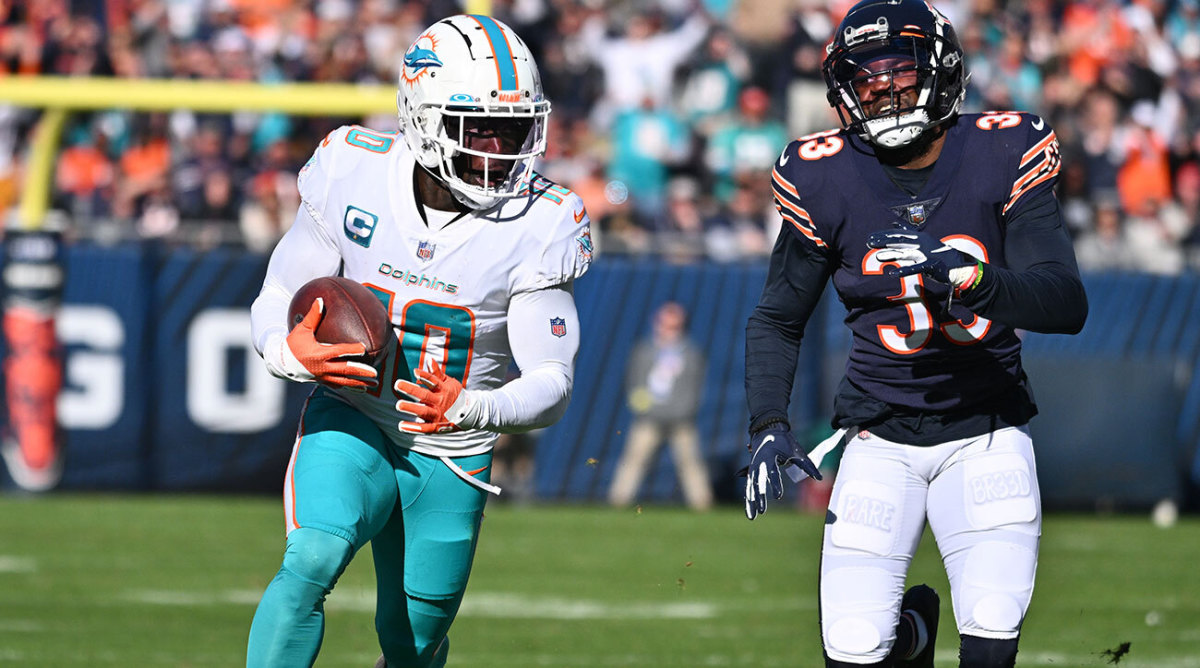
As the Eagles’ defensive coordinator last season, Gannon lost to the Chiefs in February’s Super Bowl, less than a year after Kansas City traded Hill to Miami.
“I think the trends happen, and everyone is a little bit different in how they think about those things,” Gannon says. “And I always say … some people are like, ‘Why did you make that trade? Oh, why would you do this? Oh, why?’ Like, you’re not sitting in their shoes. You don’t know what they know. I never think twice about, ‘Oh, why would you give away Tyreek Hill?’ Well, it didn’t really matter, did it? You guys, really? Great. I was there. Were we like, ‘Thank God they don’t have Tyreek?’ No. … I think everyone is case by case.”
The Dolphins swung big on Hill, but the Chiefs are the ones with the Super Bowl trophy. On the other hand, the Dolphins probably don’t regret the trade, with Hill delivering another first-team All-Pro season.
For the Seahawks, it hasn’t worked out with Adams, but they still have high hopes for his returning to health this season and helping a rising Seahawks squad that wasn’t expected to compete in 2022 after trading Wilson to the Broncos.
It’s too early to crown a winner of the Wilson trade, but so far the Seahawks have a sizable edge after selecting a talented 2022 draft class with some of the Broncos’ picks, advancing to the postseason and the breakout season for quarterback Geno Smith last year.
Seahawks coach Pete Carroll, who’s been involved in many notable trades, probably had the best response to whether the first Mack trade caused the surge in teams relinquishing their first-round picks.
“I wouldn’t know that,” Carroll says. “It doesn’t mean it’s true.”
The aftermath
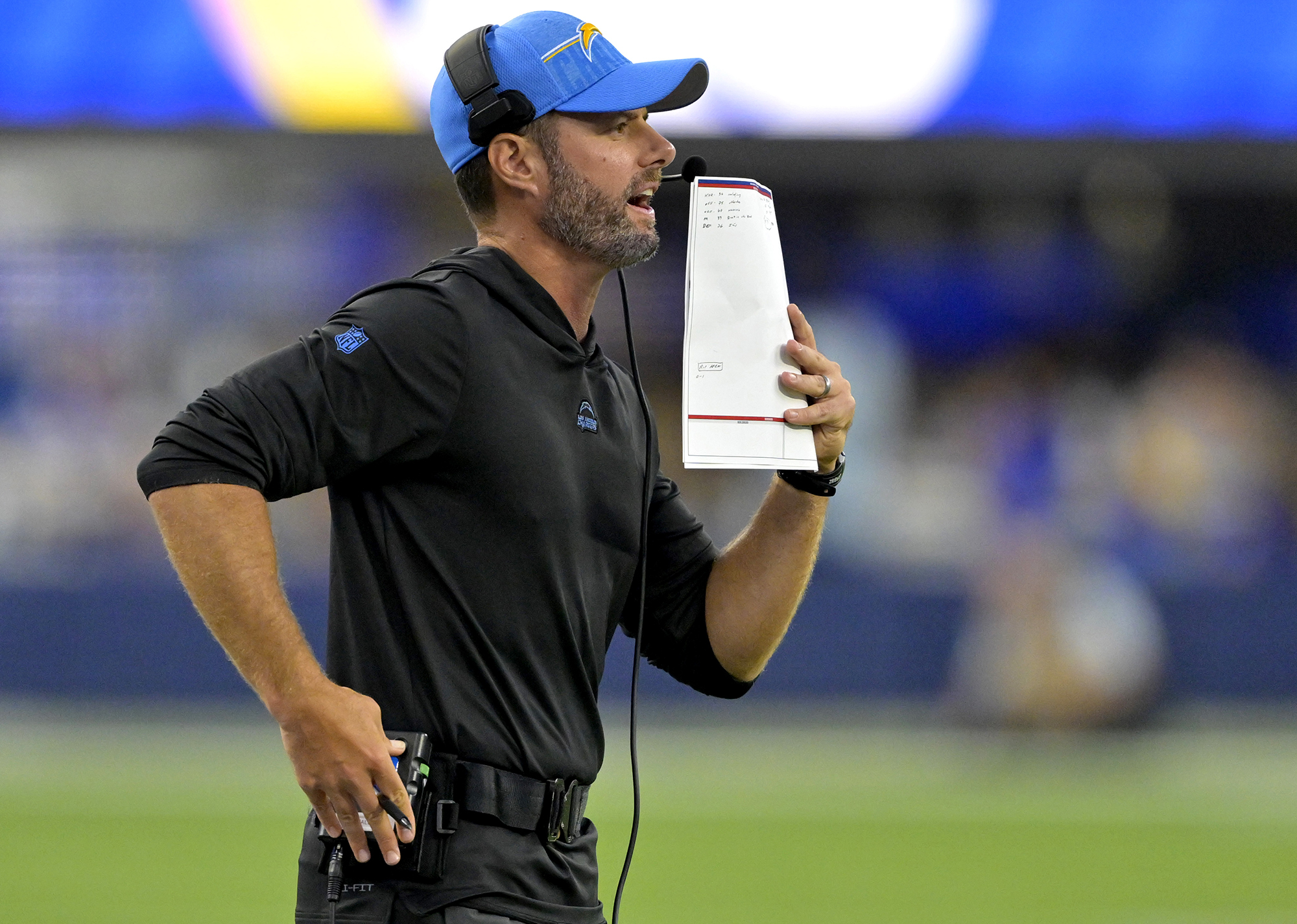
Perhaps McDaniels, Gannon, Ossenfort and Snead to an extent, are right in saying trades should be studied case by case.
To narrow it down: Was Mack worth the two first-round picks?
“What I’ve taken away from Khalil Mack [is] the two teams that he’s left, [and] what they’ve done without him,” Staley says.
The Raiders went 4–12 the season they traded Mack, and the Bears posted a 3–14 record after sending Mack back to California last year.
“There are very few players like that, where you can give up some premium draft capital, but it’s worth it because of what they’re going to bring to the team,” Staley says. “I think when you make those premium trades, where you’re going to give up draft capital like that, you better be getting the performance and you better be getting the leadership. You just can’t get the performance. He’s gotta affect your team in more ways than just on the field, and that’s what Khalil Mack does. He affects the team; he affects everybody on a day-to-day basis.”
Mack isn’t known for being a talker, but the Chargers say he’s been one of their best leaders since he arrived from Chicago last year. The second time around, Mack was traded for second- and sixth-round picks.
Odds are Mack was sharing wisdom with his younger teammates when he was stopped in June to discuss the five-year anniversary of his memorable trade. He couldn’t say whether his first trade had an impact on the many trades that followed, but he expects more shocking trades to occur in the foreseeable future.
“Absolutely, it was surprising,” Mack says. “But five years ago, man. I've moved on from that and came out here, and I’m trying to make the most of every move I make.”
